![]()
More than a century after his death, the ghost of James Maybrick would rise from his grave in an explosion of furor and excitement that would rock the foundations of many crime historians, lecturers and most certainly wannabe detectives, all of whom had spent decades trying to uncover the real identity of the world’s most notorious murderer, the grandfather of the modern day serial killer, if you will; that of Jack the Ripper.
Back in 1991, a ‘diary’ was uncovered, lying dormant underneath the floorboards of a bedroom within ‘Battlecrease House‘, the former home of James and his wife Florence.
The room in question was James Maybrick’s bedroom, and the place he had spent the last few weeks of his life in excruciating pain, suffering from acute poisoning that would eventually claim his life. But it was whilst Battlecrease House underwent some renovation work, workmen came across the diary; a leather bound scrap-book, with many pages missing but containing 63 pages of legible writing with around 9,000 written words.
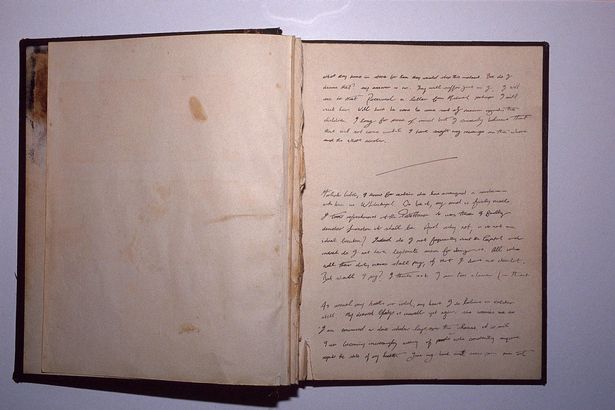
The book, or ‘diary’ as it would later be known as, would soon divide the world of self-proclaimed ‘Ripperologists’ – experts in all things ‘Jack the Ripper’, with many saying it was clearly a fake, whilst others sat on the fence, not wanting to ruin their own credentials by quickly calling it out as being fake before knowing the full facts.
But two years later, and on Friday, April 23rd 1993, the Liverpool Daily Post would be one of the very first news outlets to become aware of the existence of the diary.
Harold Brough, a journalist working for the Daily Post, was quick to run the story, and began investigating the origins of the diary, speaking to its owner, Michael Barrett. All hell broke loose, with many other news outlets quickly taking a keen interest in the story, all wanting to be the first to identify the man responsible for writing the diary, and ultimately revealing the name of the most sought after serial killer in history.
Now we won’t get into how Michael Barrett came into possession of the diary, this information is freely available on the internet, but what we can say for sure is that his story would prove to be suspicious and inconsistent and one to tread carefully through when trying to weed out fact from fiction.
But the diary itself is perhaps one of the most intriguing and possibly most important historical pieces of work to ever be discovered in terms of its importance in solving the most unsolvable puzzles of all time – who was Jack the Ripper? But for this, we need to delve into the life of James Maybrick.
James Maybrick was a well-known and wealthy cotton merchant based in Liverpool during the late 1800s. In 1871, James was unmarried and living in London with his mother, but around 1873 he would go on to form ‘Maybrick and Company, Cotton Merchants’ with his brother Edwin who would be a junior partner. He then travelled to Norfolk, Virginia in the United States to establish a new branch office where he could expand his business.
However, three years after arriving in Norfolk, James contracted Malaria and after an initial prescription of quinine failed to offer any help, a second prescription, containing arsenic and strychnine was tried. It is believed that it was at this point in James’ life that he would become addicted to arsenic, and he also believed it would make him more virile. Indeed, arsenic was seemed to be a fashionable pastime for professional men in the United Kingdom during the 19th century.
In 1880, James left the United States to return back to England. Travelling back in the S.S. Baltic, the six day voyage would introduce him to 18 year old, Florence Chandler and her mother, Baroness Caroline von Roques.
Although James was 24 years older than Florence, a romance immediately followed and astonishingly, by the time they had both arrived in Liverpool, they had already planned to be married the following summer, and on July 27th, 1881, their wedding took place at St. James Church, Piccadilly, in London.
Eight months later, Florence would give birth, albeit prematurely, to a son they called James Chandler and not too long after, the Maybrick’s relocated back to Norfolk, Virginia. However, Maybrick and Company soon began to face difficulties and the family moved back to Liverpool in 1884.
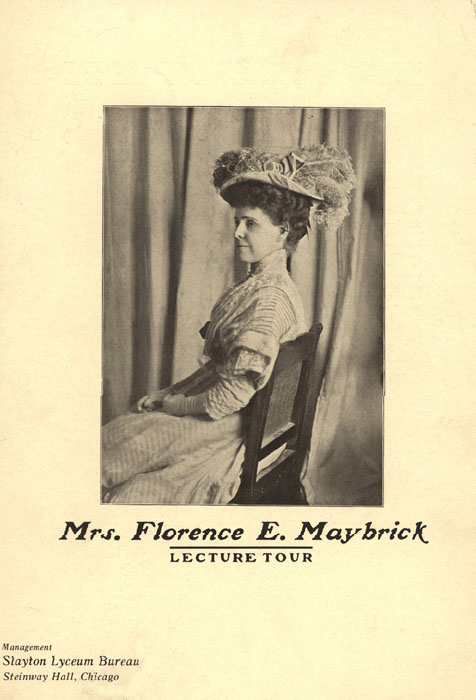
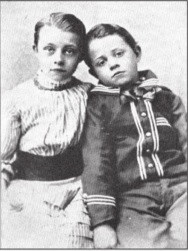
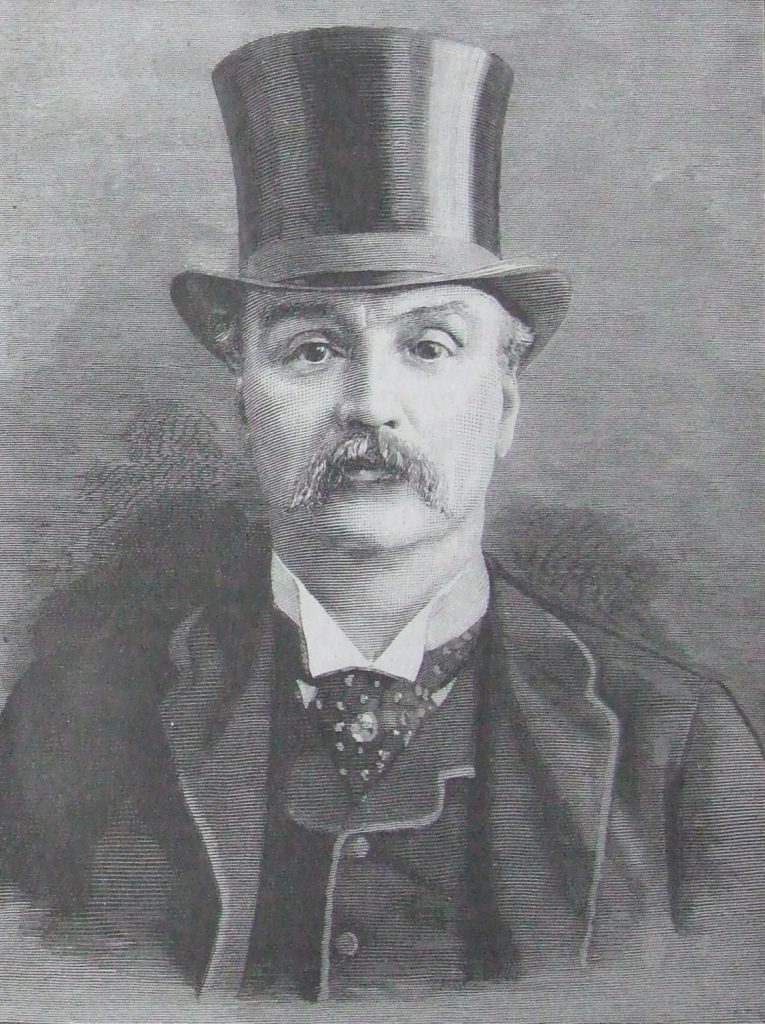
Residing in a Grassendale, a small suburb of Liverpool, James was becoming worried over financial affairs, heaping stress on not only himself but also that of his wife, Florence.
Two years later, Florence would give birth to a daughter they named Gladys Evelyn, but it appears their marriage was deteriorating by this point and James was showing signs of substance abuse, something that he had tried to hide from his social circle of affluent friends in and around Liverpool.
By 1888, the Maybrick’s moved yet again, this time to Battlecrease House in Aigburth, less than a mile away from Grassendale. It appears they had rented the house, which had included several acres of gardens, trees and also included a large pond. Perhaps by moving into Battlecrease House, it was more of a statement that tried to prove James’ stature within Liverpool, but in reality, the marriage of James and Florence had become unrepairable. James had become withdrawn but would often have violent outbursts and his reliance on arsenic had begun to consume him.
If we are to believe that the diary is indeed genuine, then what it describes to us is the descent into madness of a man hell bent on revenge. But why revenge?
The diary makes many references to Florence Maybrick having secret liasons with another man, but whilst his name never appears in any form of text, we now know that this man was called Alfred Brierley, a young cotton broker. It seems that Florence was aware that James had, himself, been involved in extramarital affairs during the course of their marriage, and along with the abuse she was receiving at the hands of James, we can assume she found solace in the arms of another man.
What makes this compelling is the fact that James Maybrick found out about Florence’s infidelity and flew into an almighty rage. And the diary shows a glimpse into the mind of the writer :
Foolish bitch, I know for certain she has arranged a rondaveau with him in Whitechapel. So be it, my mind is firmly made. I took refreshment at the Poste House it was there I finally decided London it shall be. And why not, is it not an ideal location? Indeed do I not frequently visit the Capital and indeed do I not have legitimate reason for doing. All who sell their dirty wares shall pay, of that I have no doubt. But shall I pay? I think not I am too clever for that.
Many references also refer to Michael (Maybrick), the brother of James, and his name appears a total of twenty-five times in total, with the majority of times appearing early on, and this is something that we will come back to shortly as it may prove to be pivitol in trying to understand the true origins of the diary.
The thought of him taking her is beginning to thrill me, perhaps I will allow her to continue, some of my thoughts are indeed beginning to give me pleasure. Yes I will visit Michael for a few weeks, and allow her to take all she can from the whoring master. Tonight I shall see mine. I may return to Battlecrease and take the unfaithful bitch. Two in a night, indeed pleasure. My medicine is doing me good, in fact I am sure I can take more than any other person alive. My mind is clear, I will put whore through pain tonight.
So this brings us to the autumn of 1888 and to the very beginnings of what has been termed, ‘the autumn of terror’ by many authors over the years. The story of Jack the Ripper and the crimes he committed have become somewhat a staple of British victorian history. It seem’s everyone has heard the story or most certainly the name, Jack the Ripper.
And whilst its genuinely accepted that ‘Jack’ had killed five prostitutes (or known as the canonical five) between August 31st 1888 and 9th November 1888, many scholars and researches believe the total number of women killed may stretch to around eleven, if not more.
And this is something that the diary itself seems to describe in somewhat macabre detail, beginning with what we believe to be murder of Mary Ann Nichols, whose body was found lying in Buck’s Row, Whitechapel, on the 31st August 1888. Her throat had severed by two deep cuts, her vagina having been stabbed twice and the lower part of her abdomen ripped open in a jagged sort of fashion causing her bowels to protrude.
The writer of the diary gloats about the murder ;
“I have shown all that I mean business, the pleasure was far better than I imagined. The whore was only too willing to do her business. I recall all and it thrills me. There was no scream when I cut. I was more than vexed when the head would not come off. I believe I will need more strength next time. I struck deep into her. I regret I never had the cane, it would have been a delight to have rammed it hard into her. The bitch opened like a ripe peach. I have decided next time I will rip all out. My medicine will give me strength and the thought of the whore and her whoring master will spur me on no end.”
The writer, seemingly infused with delight, goes on to say ;
“I will not allow too much time to pass before my next. Indeed I need to repeat my pleasure as soon as possible. The whoring Master can have her with pleasure and I shall have my pleasure with my thoughts and deeds. I will be clever. I will not call on Michael on my next visit.“
At the time of the first murder in Whitechapel, the Maybrick’s marriage was in tatters and it seems plausable that James and Florence were now sleeping in seperate bedrooms and would do so for the remainder of the now short time he had left before his death later in 1889. James was also well aware of Florence’s flirtations with another man, just as the diary indicates, but we do have to question – who else may have been aware of Florence’s secret rendevouz’s with Alfred Brierley?
James, it seemed, had a very close relationship with both of his brothers – Edwin and Michael, and it is the latter that the diary mentions on quite a few occasions. It appears that James had met Michael numerous times either in Whitechapel, London (during the time of the Ripper murders), as well as at Battlecrease house in Liverpool. I guess therefore, its safe to assume that James would have told Michael about his troubles with Florence as well as mentioning her relationship with Alfred Brierley.
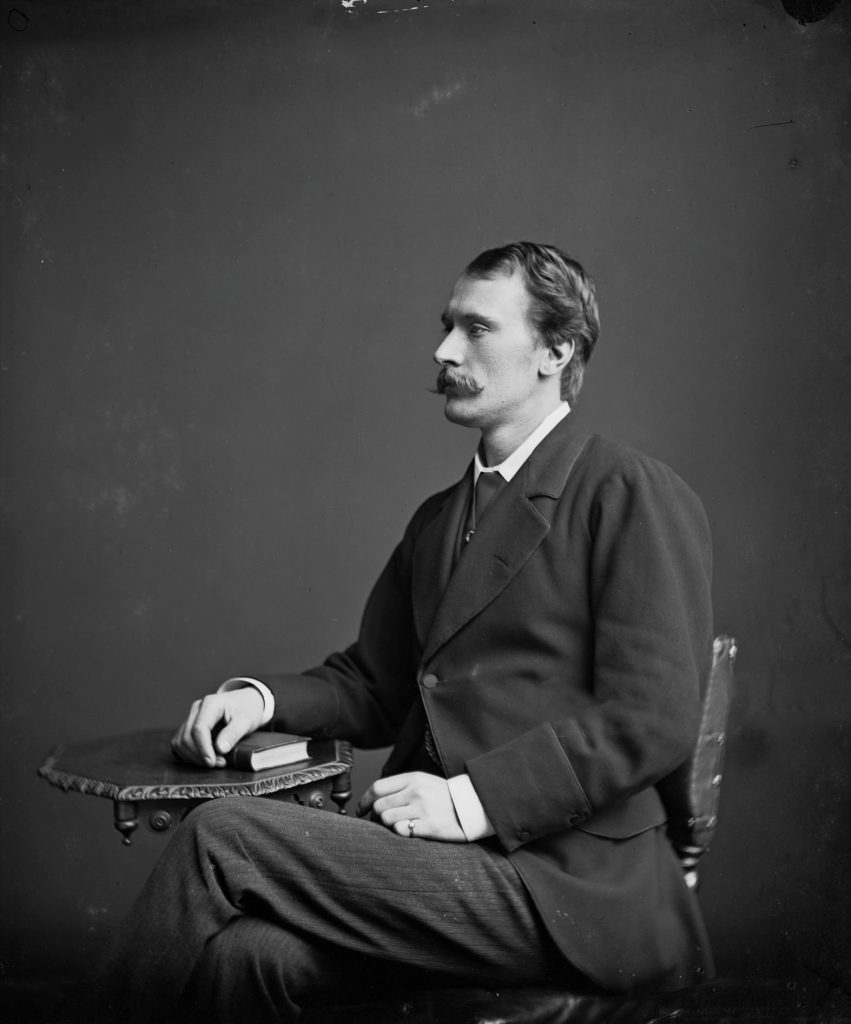
And as for Michael Maybrick, he was a successful composer and singer who travelled throughout the United Kingdom, and indeed, the world, during the mid-to-late 1800’s. Many of his songs would be written under the pseudonym, “Stephen Adams”, and being an established and experienced writer of songs, Michael had a unique way with words and verses and this is something we will mention again towards the end of this story.
The Whitechapel murders, if we are to just talk about the known five canonical victims or named as the victims of Jack the Ripper, lasted for a period of nine weeks – from Friday, 31st August and beginning with the murder of Mary Ann Nicols, and ending on Friday, 9th November 1888 and the death of Mary Jane Kelly.
In that nine week period, the five victims were found brutally slain during the early hours on days that fell on or close to the weekend, which in itself could be a clue as to the travel habits of the killer. The only exception, being Mary Jane Kelly, whose body would be found lying on her bed by Thomas Bowyer, who had been sent by his boss later in the morning to collect some rent money. Interesting, Mary was the only victim to be found murdered indoors.
- Mary Ann Nichols – found 3.45am, Friday 31st August 1888
- Annie Chapman – found 6:00am, Saturday, 8th September 1888
- Elizabeth Stride – found 1:00am, Sunday, 30th September 1888
- Catherine Eddows – found 1:45am, Sunday, 30th September 1888
- Mary Jane Kelly – found 10:45am, Friday, 8th November 1888
The diary indicates to us that James would often travel to London, and as already mentioned, he would at times meet his brother Michael. However, the writer of the diary never starts any of the entries with a date, so we cannot say for certain if James was indeed in London on the dates when the murders actually took place and all we can do it try and find clues hidden within the text.
If the diary is genuine, then the writer goes into extreme details when describing the murders. But what is strikingly obvious is that he also likes to mock the reader by writing verses, such as ;
One dirty whore was looking for some gain
Another dirty whore was looking for the same
and;
One ring, two rings,
A farthing, one and two,
Along with M ha ha
Will catch clever Jim
its true
No pill, left but two
The writer of the diary is consistent throughout, using verse to mock not only the reader, but also those investigating the murders. And it seems Detective Inspector, Frederick Abberline was the main target;
Oh Mr Abberline, he is a clever little man
he keeps back all that he can.
For do I not know better, Indeed I do
did I not leave him a very good clue.
Nothing is mentioned, of this I am sure,
ask clever Abberline, could tell you more
Abberline’s name is mentioned twenty-five times in total, many times used in verse as it seems the writer is somewhat challenging the former detective inspector in a cat-and-mouse parody. And you also get the sense that the writer himself, was feeling somewhat untouchable!
You can also see the writer is certainly at ease when it comes to writing, and especially more so in a form that somewhat resembles that of what you would associate with someone who perhaps has a career in theatre? Perhaps someone such as Michael Maybrick?
This then brings us to question as to who the author of the diary was.
Months after the diary’s discovery, Mrs. Doreen Montgomery of Rupert Crew Ltd (one of London’s best known agencies) contacted author, Shirley Harrison, inviting her to London to see the diary being presented by Michael Barrett, who was hoping to have it published.
This then saw the diary and its contents undergo extensive research and examinations, leading Shirley and her team to conclude that it had been written by James Maybrick. The handwritten entries seemingly pointed to proof that Jack the Ripper was indeed the wealthy cotton merchant from Liverpool and who seeked revenge for his wife’s infedelity.
But is this really the case?
Other than pages sprawled with information that was already in the public domain during the time of the ripper murders, does the diary have enough evidence to convict James Maybrick of murder?
People will point to the fact as it was discovered under the floor boards of the bedroom James Maybrick once used, then surely it must have been written by him?
But let’s dig a little deeper and turn everything that we have been told around, and point the finger of suspicion to the one person whom James had a good relationship with and someone who he had spent a lot of time with whilst in London – that of Michael Maybrick.
There is a wonderful book called ‘They All Love Jack : Busting the Ripper‘ that was released back in September 2015, and written by Bruce Robinson. The book, a massive 864 pages thick, contains a wealth of information that took over twelve years to put together, but in it, a new name is added to the many of Jack the Ripper suspects.
But why would Michael not only begin a killing spree, but also want to eventually put the blame onto his brother James?
In the case of Michael, he had a deep hatred in women, that is a fact. He detested everything they stood for and it seems the poorest and those working the streets angered him even more. But it was the woman James Maybrick was married too that seemed to be the focal center of all of his hatred – that of Florence Maybrick.
It has been written that Michael preferred being in the company of men, spending more time in male company than that of females and yet despite this, he still married to a lady called Laura Withers on the 9th March 1893. She had been his housekeeper for some time. But it has been documented that even though he was married, he would still never be seen out in the company of his wife, and on the odd occurrence they were seen together, he would often walk behind the carriage she was travelling in as he couldnt stand sitting next to her!
As for placing the blame of the atrocities that took place in the autumn of 1888 onto his brother, why would Michael do that?
For this, we have to look into the freemasons during the victorian era. We know that both James and Michael were themselves eminent freemasons, so it’s quite plauseable that Michael, worried about his status within the organisation should his ‘little’ secret ever be exposed, tried to cover his tracks and so began a campaign to discredit his brother.
The interesting thing behind this theory, and that’s all this is, is that no-one can place an exact date as to when the diary was actually written. Whilst tests on the ink used and the type of paper that is bound inside the leather cover seemingly dates back to the late eighteen hundreds or early nineteen hundreds, when it was actually written cannot be certified. So with this in mind, surely it’s within the realms of possiblity that it may have been written after the death of James and therefore, Michael perhaps wouldn’t be feeling as guilty in bringing his brothers name into jeapody as he may had done if James had still been alive.
The last known, or the last of the canonical victims to be murdered occurred on Friday, 9th November 1888 and whilst there may well be more victims associated to Jack the Ripper, we will never be sure. But there is and always has been, a lingering question as to why the killings suddenly stopped?
The truth, however, couldn’t be any further away!
Michael Maybrick was known for travelling around the United Kingdom at the time of the ripper murders and he would often be in Manchester one evening, followed by trips to Newcastle, Sunderland, Newcastle and Bradford amongst many other towns and cities . Interestingly, a truly horrific murder did indeed take place in Bradford on Thursday, December 29th 1888 when the body of a seven year old boy named John Gill was discovered badly mutilated.
The South Wales Echo, reported the injuries in truly horrific detail :
“The unfortunate victim had been indescribably mutilated. Both legs were cut off close to the body. The abdomen was slightly open, and the intestines partly extracted. Both ears were cut off, and there were other shocking disfigurements. When found, the limbs were tied to the body…The braces which the deceased had worn were used to bind the limbs to the trunk. The clothes of the boy were then wrapped round the body, the jacket enveloping the parcel.
“There was a sack found with the body with the name “W. Mason, Derby-road, Liverpool,” printed upon it, and this the police hope will serve as a clue to the perpetrators of the crime…”
When you read this, you automatically think of the savage butchery and mutilation of Mary Jane Kelly, who was the last victim of the canonical five.
So you do have to ask yourself, how many other people were killed by Jack the Ripper and in what areas did they occur within? And if we imagine for one moment that Michael Maybrick WAS the ripper, then he would certainly be in the right location at the same time as the John Gill murder – this is something factually correct as he was appearing in Bradford just days before the discovery of Gill’s body.
It appears that Jack also liked to leave clues at the scene of his murders and again, the diary gives us reason to delve deeper into each case. For example, the writer of the diary claims he ‘left his mark’ during one outrage ;
“The thrill she gave me was unlike the others, I cut deep deep deep. Her nose annoyed me so I cut it off, had a go at her eyes, left my mark, could not get the bitches head off. I believe now it is impossible to do so. The whore never screamed.”
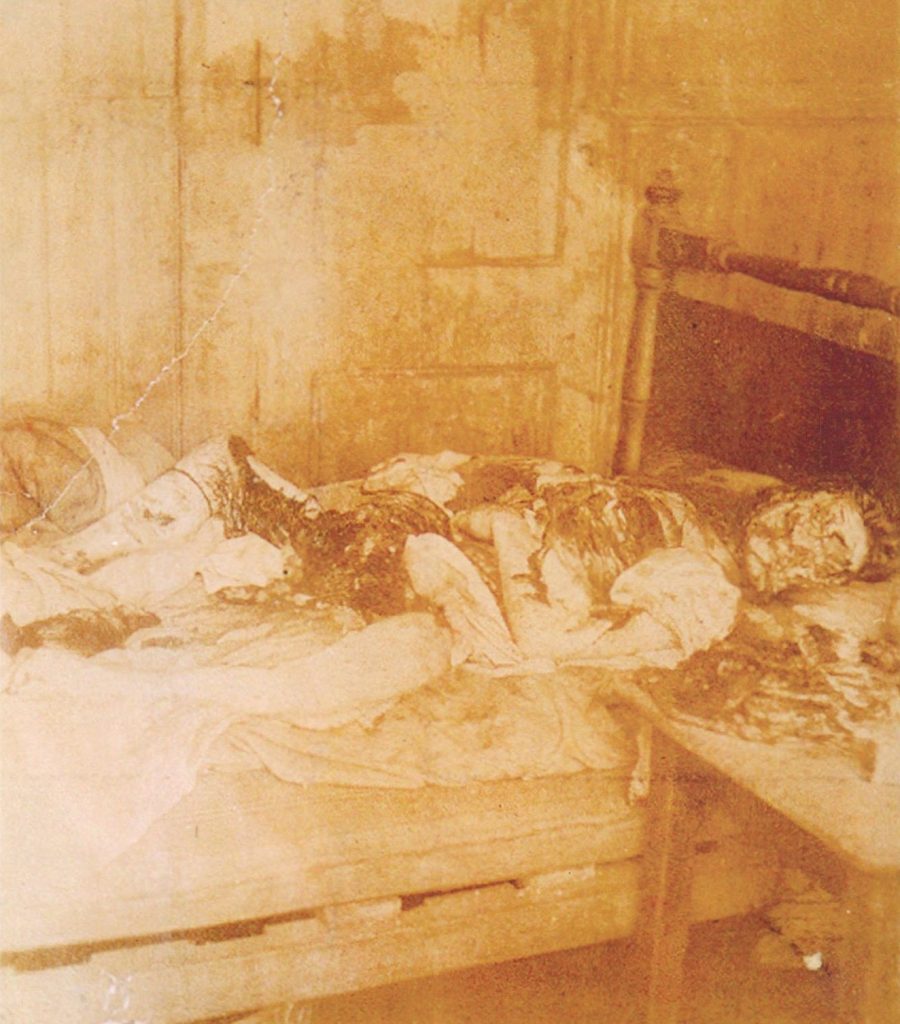
Catherine Eddowes was the fourth victim of Jack, and amongst the many injuries and cuts to her body, two ‘inverted V’s’ are thought to have been purposely cut beneath each eye, and when placed side-by-side, this would show the letter ‘M’. Many people assume that this is a subtle clue left by James Maybrick. But what if everything we have ever read on this subject is wrong, and the inverted ‘Vs’ are indeed meant to refer to ‘Michael?’
And then there is the photograph of the body of Mary Jane Kelly and the so-called letter ‘M’ that can be seen amongst the blood splatter on the wall. Another reference to Michael perhaps? Or are we just seeing what we want to see?
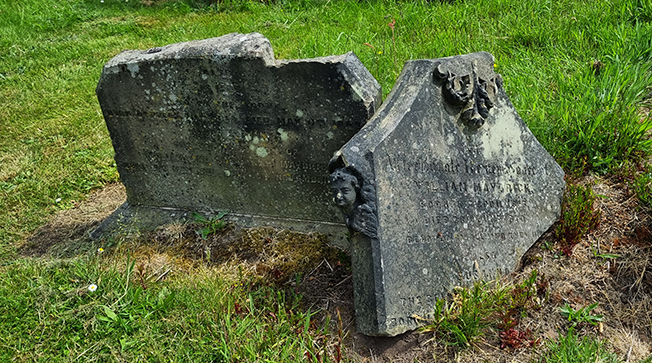
I am in the habit of taking strong medicine.
James Maybrick, his health took a turn for the worse during the latter parts of 1888 and on the 27th April, 1889, he was taken ill after administrating to himself a double dose of strychnine. His reliance on medicines, that included the use of arsenic, would soon lead to his death.
Shortly after, and on the 8th May, James’ wife, Florence wrote a letter to Alfred Brierley, but this was intercepted by Alice Yapp, one of the maids at Battlecrease House. This letter was then handed over to Edwin Maybrick, along with many others Yapp had been asked to post. Edwin would then pass some, if not all of these letters to Michael.
With James now in a serious condition, Michael had returned from London and was to soon become, we believe, the head of the house. More importantly, it appears he had a hatred for Florence – perhaps because of her infedelity towards James, and on May 9th, and after another maid had made an accusation towards Florance, saying she had seen her tamper with bottle of Valantine’s Meat Juice, that would later be confirmed to have contained half-grain of arsenic, Michael placed Florence under house arrest.
James Maybrick died two days later, on May 11th 1889.
Florence would soon be arrested and charged with his murder, something which she would later deny in court and the trial and the real story of Florence Maybrick is a story we have planned for another day.
So, what of the diary; Who wrote it? When was it written? Is it a modern hoax?
One answer I can say with 100% certainty is that the diary is real. But it is not all it seems to be! And whilst the contents contained within may point to James Maybrick as being Jack the Ripper, we should all tread carefully before making assumptions that what has been written is nothing but the truth.
On a personal note, I cannot dismiss Michael as being the man behind the diary. His long career as a well known singer/songwriter cannot be ignored as the diary contains plenty of examples of verses that mock not only the reader but also the police investigators and the press at the time.
Michael, after the death of James and with Florence now out of the way and locked up in prison, had all the time in the world to concoct the idea of a diary. Obviously, if he, himself was the ripper, he had all the knowledge required to pen such detail and interweave it with his brother’s tales of Florence’s infedelity. Using words such as “whore” and “bitch” to imply James was full of rage and resentment to his wife, Michael had everything he needed to convince the world of Jack the Ripper’s true identity.
Now, the last entry into the diary is dated 9th May 1889 so some will say that if the diary was signed off by James on the 9th May, then how could Michael have possibly written it? I would argue that at no other time in the diary are any other dates entered, so why should we believe that the final entry was indeed written on the 9th May? It wouldn’t have been difficult to have simply back dated this last entry long after the death of James.
But let’s go back to Michael and his career as a singer/songwriter and to the double-event murders that puzzled the police at the time, as well as today’s modern day investigators – the murders of Elizabeth Stride and Catherine Eddowes.
What has become known as the Goulston Street graffito, a sentence was written in chalk on a wall that read; “The Juwes are the men that will not be blamed for nothing”.
Again, a rhyme or verse written by someone, it seems, with a knack of writing. Someone, perhaps, like Michael Maybrick?
But what makes this all the more interesting is the wording – Juwes.
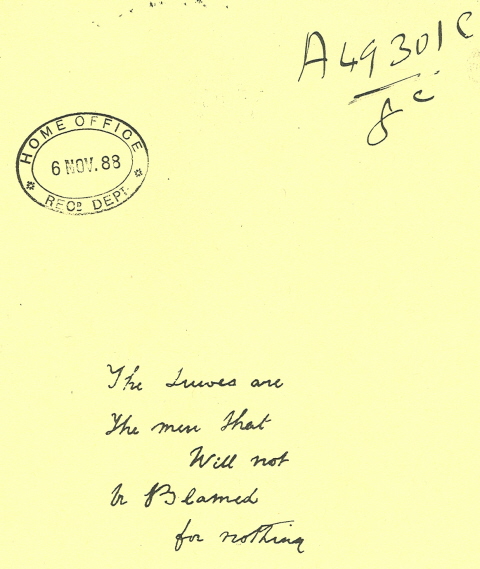
It has been said that this is a reference to the freemasons and to “Jubela, Jubelo and Jubelum”, assassins central to the Masonic lodge.
If we are led to believe that this is true, it is no surprise as to why it was quickly rubbed off the wall by orders of Sir Charles Warren, who was Chief Commissioner of the Metropolitan police during the ripper murders. He was a senior mason and knew full well that the word ‘Juwes’ had been written by a fellow mason, and there would be no way he would allow the freemasons to be dragged into the murky world of the savage murders!
Of course, I’m only putting forwards my own theory when it comes to the freemasons and the link with Michael Maybrick, but it all does seem plausable.
If we need an ounce of proof that Michael was extremely well versed in being deceitful, we only need to refer back to press interviews not too long after the Florence Maybrick trial in 1889.
The Examiner on August 24th, 1889 recorded an interview with Michael and it’s quite telling ;
“Nothing would please me more now,” said Mr. Michael Maybrick, when called upon by the ‘Herald’s’ representative, “than to hear that the Home Secretary’s decision is that Mrs. Maybrick shall go free.”
Mr. Maybrick said ; –“It has been published that I never liked Mrs. Maybrick – that I avoided her house, and said once that I never would darken her door again. All this is untrue. My relations with her were always pleasant. She has come to me time and again for money and one thing and another and she always got it.”
Michael goes on to say ; “Since his death (James’) my chief desire has been to save his good name for the sake of his children. For their sake, I hoped she would not be convicted, and I am now anxious for her release. I have no emmity against her, and do not want to be understood as making any charges against her.”
Also, when asked if he knew that James had used arsenic, Michael replied; “No, I do not. I am sure he didn’t, as I am of anything, almost. If he had used it I would have been certain to know of it. He was not a man to use poison. Besides, he was always very confidential to me, told me everything, and he would have been sure to tell me if he had any habit of that kind.”
So, Michael wants us to believe that he knew nothing of James’ addiction to using arsenic? And he not a bad word to say against Florence?
Finally, is the fog that once blanketed the East End of London during those terrifying months of the ripper’s reign now slowly beginning to disperse, and in doing so, perhaps – just perhaps, the face of Jack the Ripper is slowly beginning to reveal itself?
Has James Maybrick been wrongly accused as being Jack, or does the diary give some clues as to the real identity and that of Michael Maybrick?
One thing is for sure, despite the many accusations of the diary being a fake – a hoax; it most certainly is a real, physical entity in every sense of the word. And as for its contents, we have to treat it with due respect and keep on trying to look at what has been written, reading between the lines. The clues are there, I’m sure of that. We just need to tie them down to real, factual evidence that may OR may never be forthcoming.
Until then,
I give my name that all know of me, so history do tell, what love can do to a gentle man born. Yours truly,
Jack the Ripper, 3rd May, 1889
Please follow me on social media;
Twitter – https://twitter.com/dohpods
Instagram – www.instagram.com/dohpods
Youtube – https://www.youtube.com/c/DaysofHorrorPodcast
Music;
Casual Desire – Ugonna Onyekwe – No Copyright Music
Contact – The Tower of Light – No Copyright Music
On the Chain – Myuu – No Copyright Music

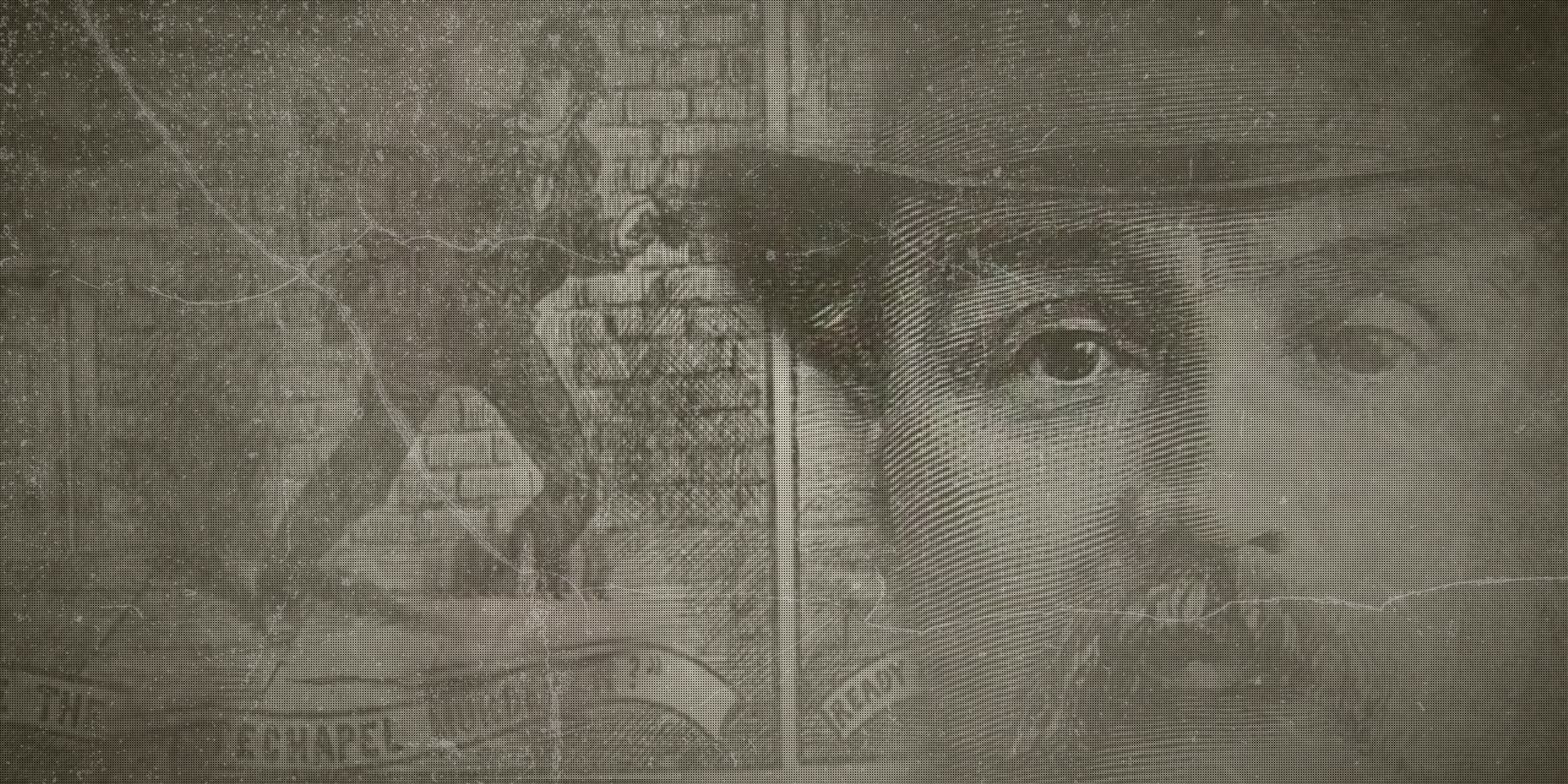
Leave a Reply